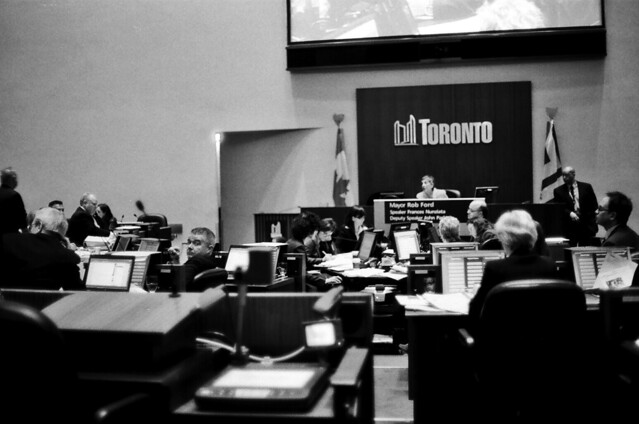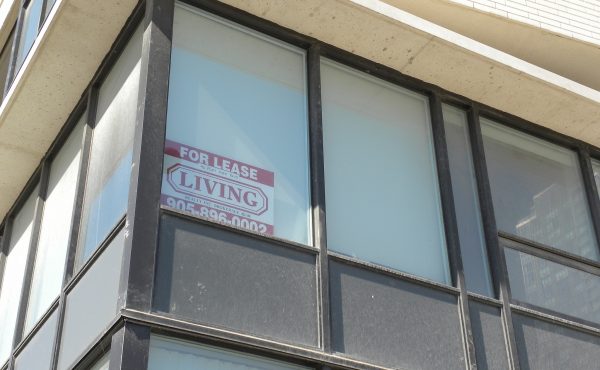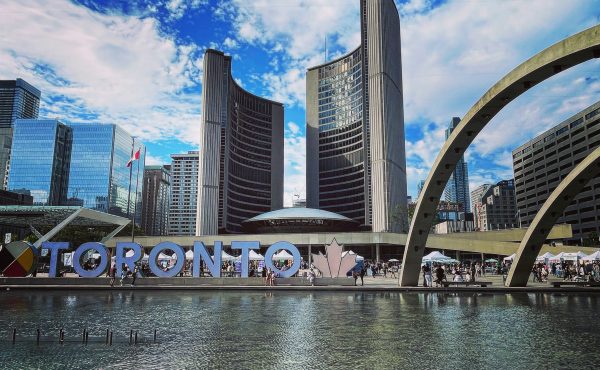
Spacing is pleased to present this joint column by internationally renowned urban designer Ken Greenberg and New York-based urban economist John Alschuler.
THE RACE TO THE BOTTOM
why gutting Toronto’s services will lead to a downward economic spiral
Toronto City Council’s imminent vote on the City’s budget is among the most significant in our recent history. Meeting Mayor Ford’s goal of cutting $744 million dollars requires deep cuts ranging from less plowing and cleaning of streets to sending more trash to landfills, to cutting public health programs, school breakfasts, crossing guards, grants to arts and culture, parks maintenance, planning, public art, drug prevention programs, eliminating bus routes, closing library branches among many many other things. When combined with core service cuts, user fees, staff reductions and dismantling and sell-offs, what is being proposed is an unprecedented assault on municipal government’s ability to invest in our future.
Aggressive action is needed to restore fiscal balance. Those policies need to bring greater efficiency to government, eliminate work rules that bloat costs for no reason, and, when necessary, reduce some services we can no longer afford. And, Toronto should also make more use of what powers it does have to tax itself plus use other financial tools recommended by such diverse groups as the Board of Trade and the CivicAlliance. What we do not need is a blunt assault that will leave us neither fiscally stable nor competitive for the future.
The critical balance between the public and private is at the heart of what makes cities tick; a city with a competent city government attracts and retains entrepreneurial energy not the cheapest city. Providing resources, services and a ‘helping hand’ to those in need and incentives to local enterprises or activities, especially in an city of immigration, is good economics and an essential investment in the future, and the failure to do this produces vastly larger expenditures when serious problems arise. Quality of Life, the key asset in the contemporary global economy, takes a serious hit as public space, cleanliness, public health, public transit, housing, the integration of new arrivals and arts and culture are starved. The future of our City and the stability of its budget, rests on exploiting our competitive advantages, not squandering them.
Toronto is not alone in facing severe fiscal challenges. It takes extraordinary efforts, ingenuity and vision to mobilize resources and forces both inside and outside government to turn things around. The clearest example of the courage to make the hard choice to choose the promise of the future over the fears of the present is Mayor Michael Bloomberg’s leadership of New York City. Bloomberg has brought a businessman’s commitment to strategic investment to municipal management. The days after the 9-11 attacks were terrifying for the nation, and particularly for New Yorkers. The city had lost thousands of citizens to horrific violence as one of its majestic icons was reduced to rubble. Then, this tragedy magnified the effects of a national recession to cripple New York’s economy.
The Mayor’s response was to choose a deep faith in the future over the fears of the present. As a citizen, and an entrepreneur, he viscerally understood that if services were allowed to decline, faith in city government would be shattered leading to the inevitable outflow of more talent and more jobs, not to mention the nicks and gashes inflicted on those most vulnerable. Mayor Bloomberg also understood the need to invest in the future infrastructure of New York.
His response was to enact the largest property tax increase in the modern history of the City and to launch efforts to make government more efficient. That expansion of the city’s fiscal base provided a long term base for revenue needed to weather the effects of the recession. It also gave him the time needed to allow government to make changes that reduce costs while improving service levels. The returns have been remarkable. The world can see them in tangible forms as they experience the most substantial expansion of parkland since the New Deal as projects like the High Line park fuel New York’s tourism industry and, anchor the revitalization of neighborhoods . The world will soon see the emergence of the Hudson Yards, comprising 12 million square feet made possible by the City’s bold commitment to the expansion of the subway system. And the world can see the improvement in New York’s public school system which provides a ladder of opportunity for the city’s children.
Toronto’s 44 city councillors were not elected to diminish the city but to use this budget watershed to forge a more enlightened made in Toronto solution. Managing any major enterprise requires leadership that refuses to overextend fiscal resources beyond the enterprise’s inherent capacity. That discipline sets priorities which can be helpful over time, but wrenching at the outset. But managing such an enterprise also requires the courage to invest in the future. This affirmation that resources appropriately expended today yield valuable returns over time is the foundation upon which innovation, growth, and expansion rest.
Now is a time when the stewards of the great urban centres of North America, New York, Chicago, Toronto, Los Angeles, need to strike that balance with particular care. This new century promises to be one of urban growth. As the overarching requirement to manage our environment inexorably leads to greater density in our cities, as the immigrant populations that are source of such dynamism in our workforce and cultural life, and as the talent that corporations need flock to urbanity, the opportunities for growth for are before us. In that respect, our anchor cities join London, Paris, Hong Kong, and Singapore. Investing wisely, they will capture the private sector investment that will create jobs and reinforce the tax base, while creating a more livable environment for current residents.
If Toronto now takes the drastic path of slash and burn only, diverging from common sense, sound economic practices, the wounds would be deep and largely and unnecessarily self-inflicted. Our quality of life is our most important asset and the only key to a prosperous future! Torontonians cannot afford to squander it on the altar of a deeply flawed ideology
Ken Greenberg is an Urban Designer based in Toronto and author of Walking Home published by Random House. John Alschuler is the Chairman of HR&A Advisors in New York; he has 25 years of experience advising the City of New York.
photo by Accozzaglia




8 comments
YUP Your second paragraph absolutely sums up my perspective..
“Aggressive action is needed to restore fiscal balance. Those policies need to bring greater efficiency to government, eliminate work rules that bloat costs for no reason, and, when necessary, reduce some services we can no longer afford.”
In short we need fiscal responsibility and Budgetary discipline. With declining property values and a diminishing home owner tax base in NYC, underfunded schools and double digit unemployment… Why should I look to NYC with its grandfathered no rent increase forever housing systems, antiquated co ops and a transit system also in need of upgrades?
David Pylyp
Living in Toronto
David Pylyp, as a Torontonian living in New York for the entire Bloomberg Era, I can tell you that the remarks about New York in this essay are spot-on. Bloomberg is a hero to anyone in New York with a brain, because they see exactly how he tackled the problems of fiscal management in a way that also preserved (make that greatly enhanced) New York’s quality of life. He loves data, and he loves smart people, and combines the two in clever ways to get results.
To give you just one example, Bloomberg knows that traffic has to keep moving for the city’s economy to function. At the same time, he knows that the city streets have to attractive to pedestrians in order to encourage productive interactions and tourism and safety. So rather than doing what Ford would do, which is to blunder around ripping out bike lanes or banning LRT based purely on emotion and gut, he trusts his very intelligent and experienced staff to come up with ideas like through-streets (no turns during rush hour), pedestrian plazas (chiefly on Broadway), separated bike lanes (with floating parking), etc. The city then tests them by building a few and studying GPS data gathered from taxis. Since all cabs have GPS now, and since cabs make up a huge portion of traffic on all Manhattan streets below 96th St, you can get very good data on what changes in speed occur after making changes to a street. There is no anti-left or anti-right rhetoric, just data, and the results are stunning.
As to your comments specifically, the “declining property values” issue is nationwide here, but New York’s property values have fallen less than any other city in the country. Unemployment in New York is slightly less than the US as a whole (not the case in Toronto, by the way). The “antiquated co-ops” that you speak of are some of the most prized real estate in the city, and even the low-end outer boro co-ops are hardly anything to be upset or even form an opinion over. Transit in New York does need upgrades but from 11 years of living here I can tell you they are doing a decent job of upgrading stations and trains and even with the recent massive fare increase it still costs me less to ride the subway than it costs you.
So, actually, New York is an excellent model for Toronto to follow, and if you don’t like hearing that then you probably do not understand either city very well.
Yes Mssrs. Greenberg and Alschuler! And an interesting point, ISkyScraper, re. Bloomberg using data to evaluate decisions. It would be a great example for Ford and Minian-Wong to follow in light of their ramming through the removal of the Jarvis bike lanes. One of the reasons for this was ostensibly to improve traffic flow, but now that left turn signals have been installed on Jarvis (at a cost of $14k), for instance, has traffic flow improved? And if so, is it now necessary to reinstall the 5th reversible traffic lane at an expense to taxpayers of $200k?! Making this assessment would be the scientific way. An additional piece of data would be how the 67,840 people (“customers”) who live in Ward 27 (not just about the 15,000 “customers” who drive along Jarvis daily, to paraphrase emails coming out of the mayor’s office) feel about returning the 5th lane and making Jarvis less pedestrian-friendly. But I’m just a scientist and taxpayer, so what do I know?
Yes. Bloomberg & Co. have raised the bar. All citizens of Toronto need to hold our councilors to this higher standard of informed decision making.
So what was Miller’s plan to fund his city building after he emptied the reserves and ran out of accounting tricks? If he had the guts to tax residents in order to pay for his plans this would make an interesting topic. As it stands , Ford is getting blame for being left with the bill for things that voters did not ask for.
That is not to say that the Mayor and council should refrain from making investments in improving the city. It is that this conversation has never taken place in detail (including cost).
Glen> Been meaning to ask – for ages you went on about Dukes cycles — but they reopened in the same spot. Why did they reopen when, as you outlined, it’s impossible for them to do business. Thanks!
Adam Vaughan pushed through a bylaw that has the city pay a portion of their tax. It is the only retail space (611-623 Queen west) thas been granted this in the city.
This is well-argued and useful, but somewhat incomplete.
It isn’t merely the potential for slash and burn that will take us down, but a high degree of willful blindness to the four-wheeled elephants that are in the driveway and living room that cost us a lot of money, and yet the suburban majority are thoroughly incapable of exploring this massive set of costs.
In digging through old papers looking for the extent of Jack Layton’s many helps to cyclists, I came across a Jan. 12/96 Globe article featuring some of the work of economist Pamela Blais on the economics of built form. Within it was quote from a Vancouver area planner “We realized that the public subsidy enjoyed by the private automobile amounts to $2,700 per automobile per year, or about seven times the amount we subsidize public transit.”
I have copied this article to all the Councillors and Mayor Ford yesterday with a shorter note to it starting “A Car Services Review could find million$ in Caravy…” I know at time people don’t like my language/manglish, but if the facts actually worked, we’d already have a downtown Relief Line and Eglinton, and there would be tolls on the Gardiner, DVP etc.
The province could help by reversing the “amanglemation” as we need a divorce, but they too are pretty carrupt and must cater to votorists, so we likely, somehow, need to pressure the more suburban Councillors to begin to see facts as their guiding lights, not Fords.